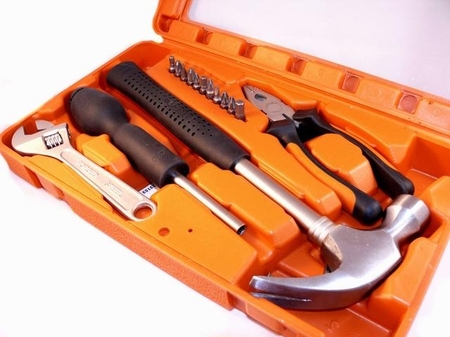Ben Smith, District Attorney for Sac County, Iowa is a modern Wyatt Earp. Unlike Gunfight, he was not summoned to Arizona, but rather Arizona came to him when Tempe-based RipOffReport.com and others sought to exploit a pending murder trial as part of a proxy war against an Internet security expert seeking to expose them. RipOffReport.com ("ROR") is the nation's leading "gripe" site, where consumers and others post various complaints about individuals and businesses which feature prominently in Google searches due to ROR's search engine optimization capability.
To say this is a David versus Goliath battle is an understatement since Sac County has a population of 10,071, whereas ROR has that many unique visitors every 45 minutes. Yet this tiny county is about to have a major impact on the future of the Internet.
As detailed extensively in a 124-page application for a search warrant recently unsealed by a Sac County court, the origin of this battle begins in 2011 when Smith tried and convicted Tracy Richter for murder. Richter was the ex-wife of Michael Roberts who ran a reputation management company. Roberts had disclosed details of an opportunity to license an existing illegal malicious SQL browser developed by Matthew Cooke to Darren Meade and Adam Zuckerman which, when deployed, could effectively remove webpages from the Internet.
Smith explains that Zuckerman hoped to emulate Cooke's business model of "reputation racketeering" which used one web property to generate defamatory content that his reputation repair property would then use to solicit removal services with people paying thousands of dollars to remove the posts. Smith notes that this is the same business model followed by revenge porn purveyors recently indicted by the California Attorney General.
According to the application, fallout between Meade and Zuckerman in Southern California led Meade to turn to ROR who worked jointly with Meade in launching a smear campaign against Roberts. As Meade testified in a civil proceeding, ROR is "the perfect place to defame somebody because it will always stay up, and [has high Google rankings]. So if you want to destroy somebody's reputation, that's a great place to do it."
The application details how the smear campaign escalated and stumbled into Sac County by including witnesses in the Richter trial and even Smith himself, as his face is on every one of the 1.8 million pages of ROR content. Smith argues that ROR and Richter engaged in a conspiracy that includes extortion, obstruction of justice and witness tampering and warns that:
No greater threat to our criminal justice system exists than allowing convicted, incarcerated murderers (criminals), and their friends and family, to destroy the livelihoods and personal reputations of the people brave enough to testify against them in open court.
The application and arrests that may follow is significant since Smith is not only taking on the most hated site on the Internet (and its founder Ed Magedson), but Smith raises serious questions about the online reputation industry itself. Smith notes that a number of online reputation companies had at one time licensed Cooke's SQL technology by way of an "affiliate-partnership" program prominently listed on many of his former websites including Reputationmanagementpartners.com (the company in which he was partnered with Zuckerman). Topping the list of "partner" companies on that website was Reputation Defender, which is now known as Reputation.com.
Have online reputation companies merely mechanized and optimized online defamation to generate business for themselves? I have firsthand experience that demonstrates that, at least in some cases, the answer is "absolutely." As a lawyer who represents victims of online harassment (including one of Mr. Zuckerman's victims), I have encountered one defendant who responded to a lawsuit filed against her with death threats and a nearly five-year campaign of cyber abuse. Yet in a matter of weeks after she consulted with Reputation Fighters last year, she made the first of her six entries about me on ROR in violation of a criminal protective order -- a most unlikely coincidence.
Speaking as an advocate and commentator in this space, Smith should be applauded for having the courage to step into this potential minefield from such a tiny county. His investigation should trigger a much larger review of the industry by the media, state attorneys general and Washington. Like Wyatt Earp before him, Smith is trying to make sure that the rule of law takes root in a wild frontier and it is important to the success of the Internet that he succeed.


